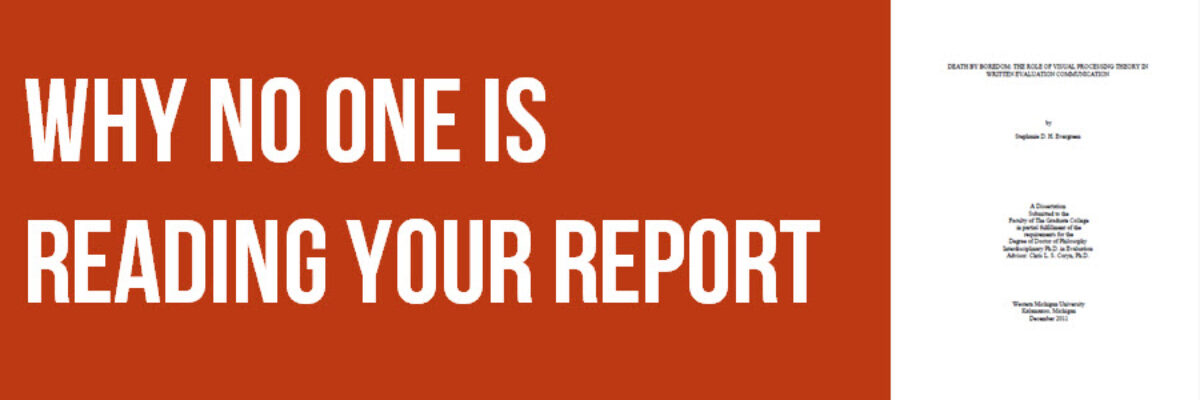Why No One is Reading Your Report
Here’s the hard truth: Your report probably sucks. Mine sure did. The heart of your content is likely fine, maybe even helpful. But, if you are anything like the hundreds of reports I see every year, the entire set of cultural norms we have somehow developed around reporting is just setting us up for failure, writing a destiny where no one is reading the report.
Why? Let me lay out the most common issues I see and propose some strategic solutions.
It is way too freakin long.
Sometimes I have folks in my workshops who sheepishly admit that their reports run over 200 pages. What? It’s painful to write a 200 pager, and even more painful to read through it. Even a 75 page report is going to feel like a burden to anyone who needs to read it.
Solution: The 1-3-25 Reporting Model.
This reporting model asks us to break down our work into a 1 page handout, a 3 page executive summary, and a 25 page report, with as many appendices as you’d like. This way, no matter what level of interest someone has in our work, there’s a document of appropriate length that matches their interest.
The good stuff is buried in the back.
No one wants to slog through pages and pages on your methodology before getting to the good stuff. We have been trained to report our findings and conclusions last but it is time to rethink that training because it usually isn’t the best fit for an audience that typically wants to cut to the chase and learn what you know.
Flip the report order so that you start with what people came to hear. Stick non-essential stuff in a sidebar or in the appendix.
It is written in some faux academic jargon.
I find it fascinating how otherwise plainspoken people completely switch to a different language when communicating for work. Whether on a slide or a page, people swap easily understood sentences for passively-structured, jargon- or acronym-filled, faux academese. It is an odd language that, I think, is used with the intention of sounding objective and smart. But it isn’t reader-friendly.
Join the Plain Language initiative. Write like you would talk to a group of smart middle schoolers. It doesn’t mean dumbing down your content. It means writing in a way that is accessible.
It lacks visuals.
Photos and graphs engage hearts and minds in ways that text cannot. You do not need fancy software or extensive new skill sets to incorporate more visuals. I have dozens of ideas for you in my Quantitative Data Visualization Collection
and Qualitative Visualization ideas are here in force, too.
It looks like it was made in Word.
If it looks like Word and it smells like Word, chances are it is as boring as Word. This isn’t to say you can’t use Microsoft Word for your reports. You definitely can. Just don’t use the default selections for things like font and color. Definitely do not use the default Word art, table formats, or diagrams. For more advice on what to do instead, check out the Report Guidance I recently published with the Kauffman Foundation.

Much of this applies even if you reporting in, say, a webpage instead of a traditional PDF.
I’m laying out 5 of the most common reasons that reports fall flat. Can you tackle these 5 things? Yes, of course. It’s just 5 things. But these 5 things are monumental. They’ll completely shift your reporting culture. You’ll become more widely respected and well known in your field. And it might take you some time to implement all 5 of these changes. If you need a jumpstart, get in touch with me. At Evergreen Data, we can set you up with reporting templates that build in these ideas from the ground up and help you take a giant leap forward.







